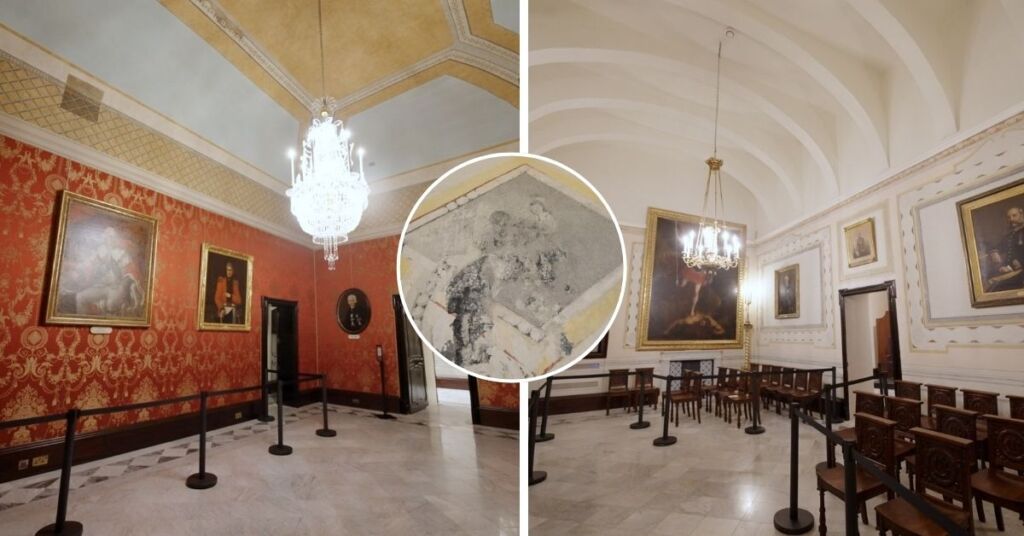Historic Decorations Linked To French Period Found In Grand Master’s Palace

The restoration of a balcony at the Grand Master’s Palace in Valletta has exposed several decorations with the same style and theme as those discovered in three halls which were recently opened to the public. These decorations were probably executed during the French rule in Malta 1798-1800, which would place them among the very few known painted works produced in the French period.
Restoration works in the ample-sized covered balcony were only completed one week ago. The balcony, overlooking Archbishop Street, also serves as a passageway between two of the halls, and its decorations are now known to be similar to those exposed in the three halls.
The three halls are the Four Continents Room, the French Room, and the Room of the Order of St Michael and St George. These are among the nine halls that were made accessible to the public for the first time last June, following extensive restoration which included works on the decorated wooden ceilings, frescoes, and flooring made of both marble and flagstones. Some of these halls formed part of the Grand Master’s summer apartment, and the halls where the decorations were discovered could have been used by officers of the Order or as a library.
The painted decorations were discovered beneath several layers of paint and were probably hidden when the halls and the balcony were whitewashed in the early British period. Their themes are not religious and do not exalt the Order or its history, but depict scenes from classical mythology and popular allegories of the late 18th century, such as those of the continents, which were in great demand during the French revolution and in the years immediately afterwards.
Painted works executed during the French period in Malta are very few and far between. The French Republican emblems were painted in local parish churches but only one of them survives at the Mdina Cathedral Museum. The recently restored Grand Master’s carriage at the Grand Master’s Palace bears four oval images containing emblems of the French Revolution.
Historical researcher Judge Giovanni Bonello states that in December 1798 payments were made to a Maltese artist for work which consisted of decorations in the Palais National, as the Grand Master’s Palace was known during the brief French period.
The daughter of Governor Lintorn Simmons, Blanche, in 1888 described the contents of the Palace, mentioning amongst other things mythological scenes decorating the soffit of what is now known as the French Room. During restoration works, traces of these decorations were found, including traces of vignettes showing small scenes of mischievous putti, such as one where a putto is painting while seated on a lectern, under the watchful gaze of another putto.
These, however, could not be exposed because the binding medium in the paint which was used to cover them was too strong and there was the risk of doing more harm than good by exposing them. Samples were taken to be studied at Heritage Malta’s diagnostic science labs to find a solution so that eventually these decorations can be exposed as well.
